A Photographer’s Working Archive: The Thomas Hugh Miller Photographic Collection
The St Andrews Photographic Collection is a treasure trove for those interested in photographic albums. Here, we take a closer look at one of the many hand-made albums that form part of the Thomas Hugh Miller Scenic Photographic Collection.
The Thomas Hugh Miller Collection is a fascinating resource for anyone interested in the working practices of late-19th century British photographers, rural life in the west of Scotland, or vernacular photography. Containing over 700 glass plate negatives and hundreds of photographic prints housed in 23 hand-made albums, the collection represents the working archive of the photographer, thought to have been Thomas Hugh Miller (1852-1936). Very little is known about Miller, nor about the family members portrayed in many of his images. In addition to developing and printing the photographs, Miller is believed to have compiled the albums in the collection, many of which serve as an inventory of his work.
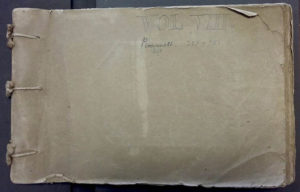
‘Album 8’ (1895) allows us a glimpse into Miller’s working archive, and the role of his albums within it. Inscribed “VOL VIII” in a script that imitates the grand typeface of a printed book, the album’s cover not only dates the photographs and ties them to a specific place (Pirnmill, on the Isle of Arran), but presents us with an internal numbering system. Turning the album’s pages, it becomes clear that this system refers to negative numbers, inscribed on each page in pencil. The very first page contains two prints of the same negative, one obscuring the other.
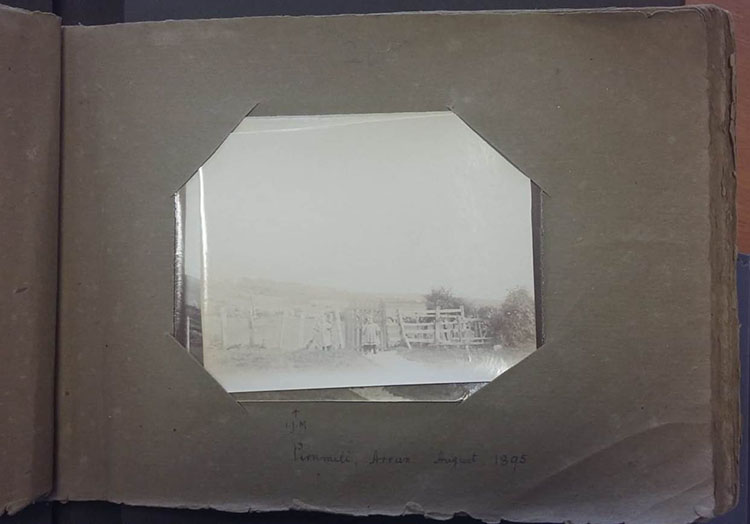
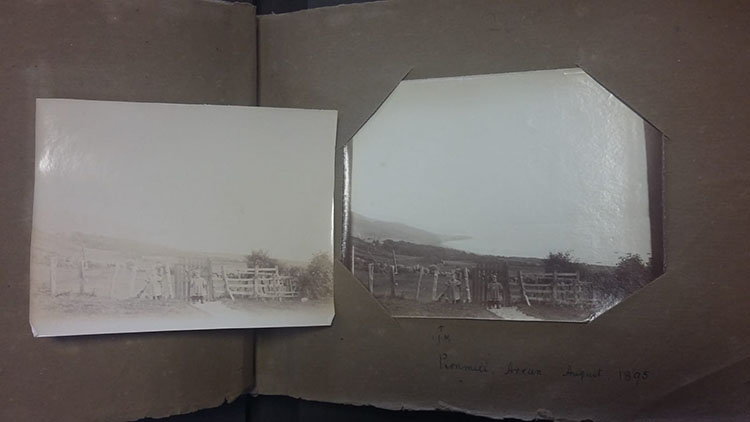
Throughout the album, multiple prints are held in place by slits cut into the pages, with some pages holding up to five prints of a single negative layered upon each other. On one page, multiple prints from a single negative are labelled “237 A, B, C, D”. The organisation of the album according to negative number helps us to see Miller experimenting with printing and cropping his photographs. One page, for example, contains an image of the ‘behind-the-scenes’ elements of the photographic setup and the final print that resulted from this process.
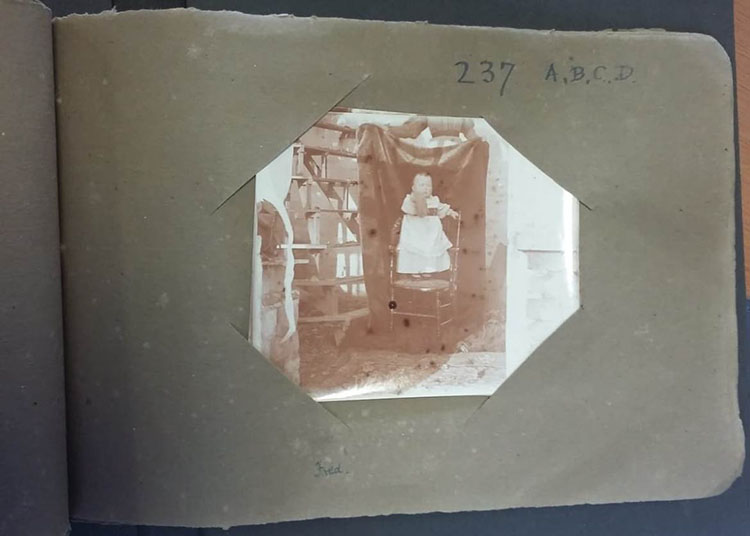
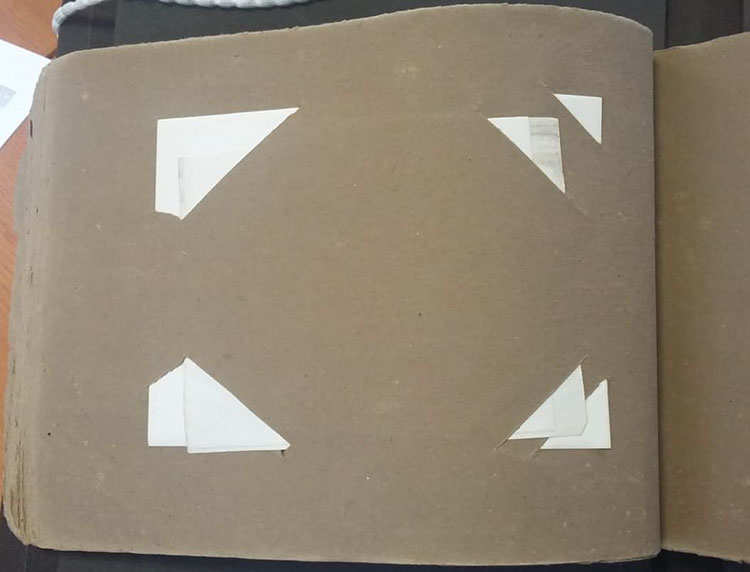
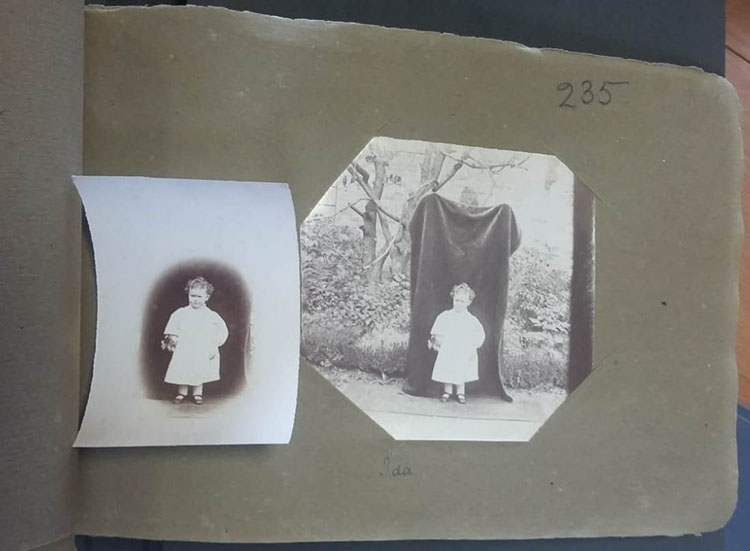
‘Album 8’ doubles as a holiday album. Miller’s children feature prominently among the album’s subjects, as do the glens and villages visited by the family while on Arran. The names of these landmarks, such as Catacol Glen, Penrioch, and the peak Ben Bharrain, are often carefully noted in the style of the panoramic ‘view’, with Miller using arrows to designate specific features of the landscape in the distance. Other handwritten captions note curiosities (or, depending on your perspective, horrors) encountered on the trip: “Snake; found on the hill side. 2′ 2″ long.” The album also includes a series of photographs taken following the family’s return to their home in Isleworth, among them backyard portraits of Miller’s daughter Ida, who emerges from a single page four times, like a Russian doll.
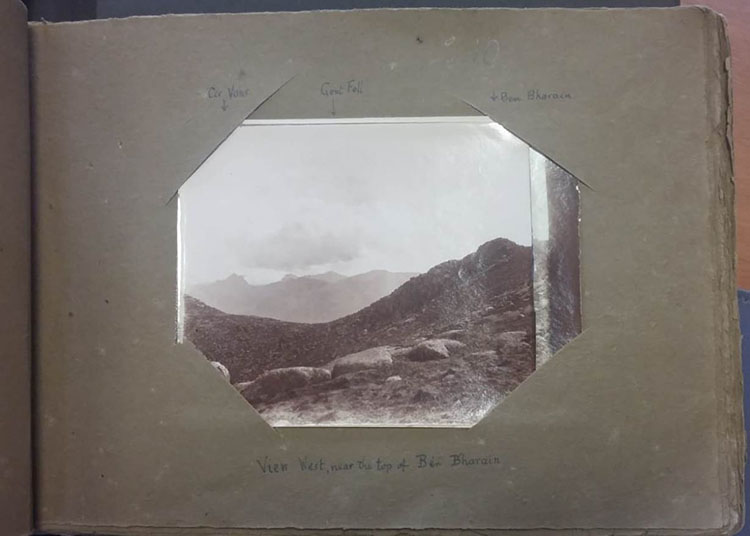
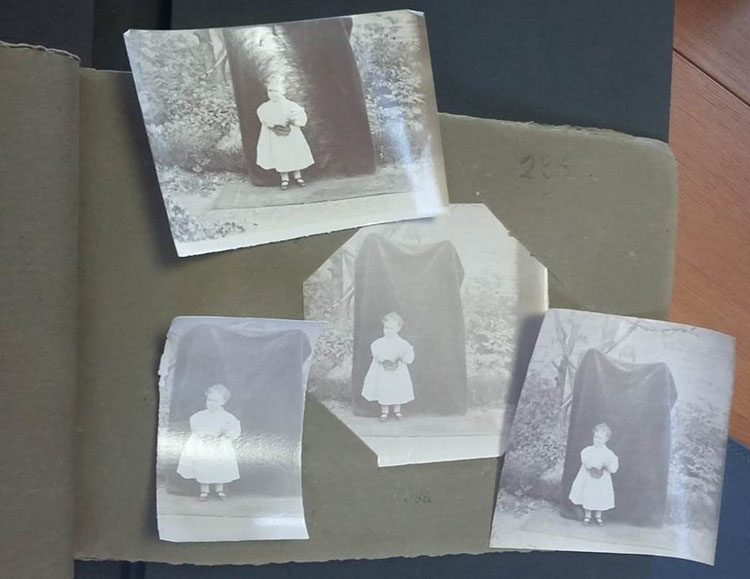
The album’s dual function as both an inventory of Miller’s prints and a record of a family holiday makes the significance of Miller’s choices difficult to discern. The album begins and ends with photographs of Miller’s daughter, yet it is hard to say whether this reflects a conscious decision to sequence his photographs or simply the structure imposed by his negative numbering system. Miller’s album also reveals little about why he made multiple prints of specific negatives. Were these images of particular personal significance, attempts at technical correction, or instances of experimentation – or all three? Comparing the subject matter and technical quality of individual prints yields few clues. Beyond this, Miller may have circulated his prints among family and friends, meaning that the number of prints in the album may not correspond to the total number made.
A closer examination of the album’s relationship to Miller’s broader archive is necessary in order to understand his working practices in more depth. The recent digitisation of Miller’s glass plate negatives, including all of the photographs in ‘Album 8’, enables us to explore his archive in high-resolution detail. These images are now accessible on the new St Andrews Photographic Collections website for all to enjoy.
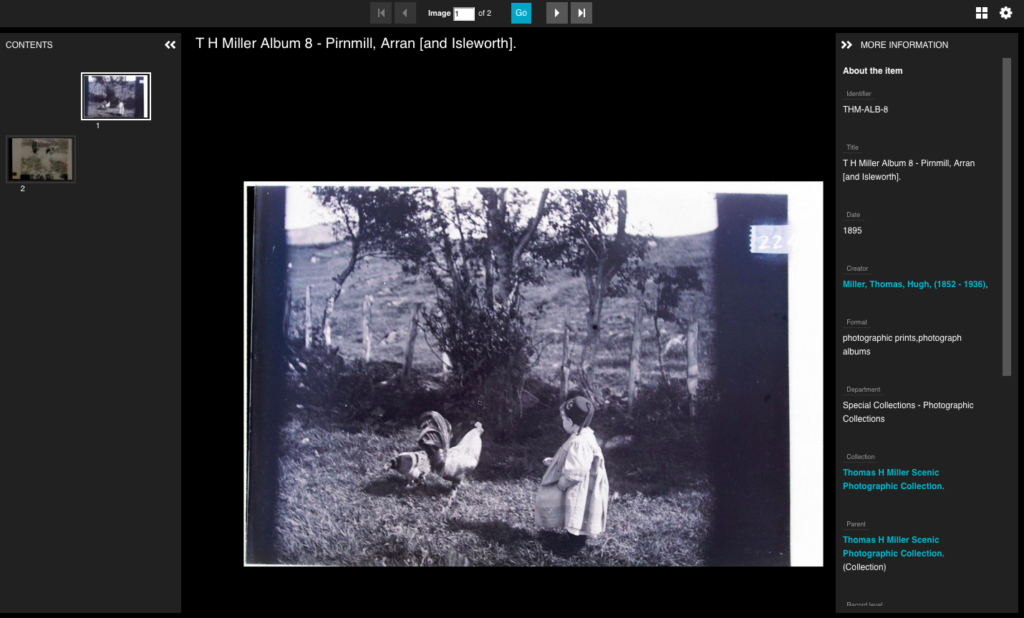
Antares Wells
Photographic Collection intern, June-December 2019